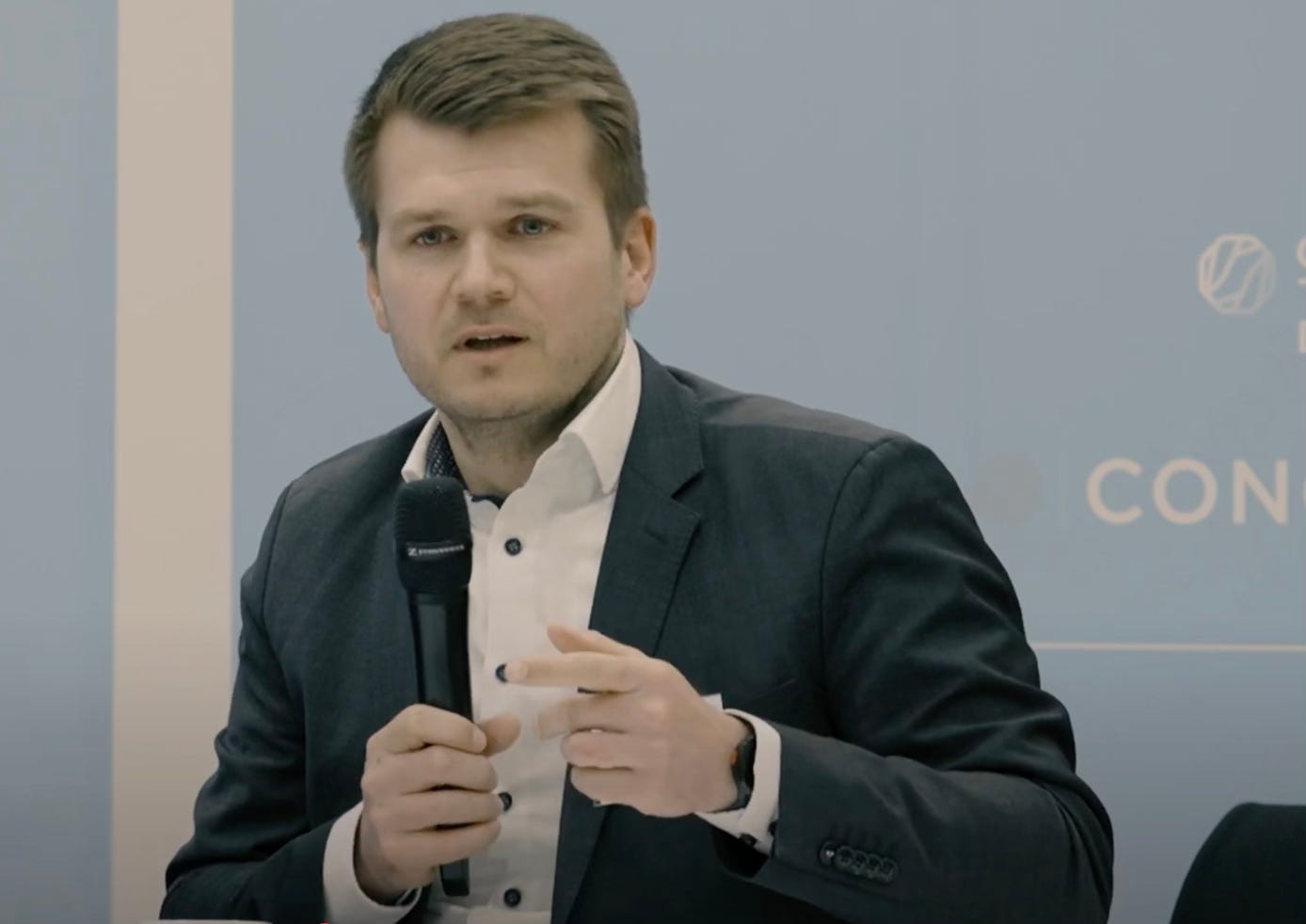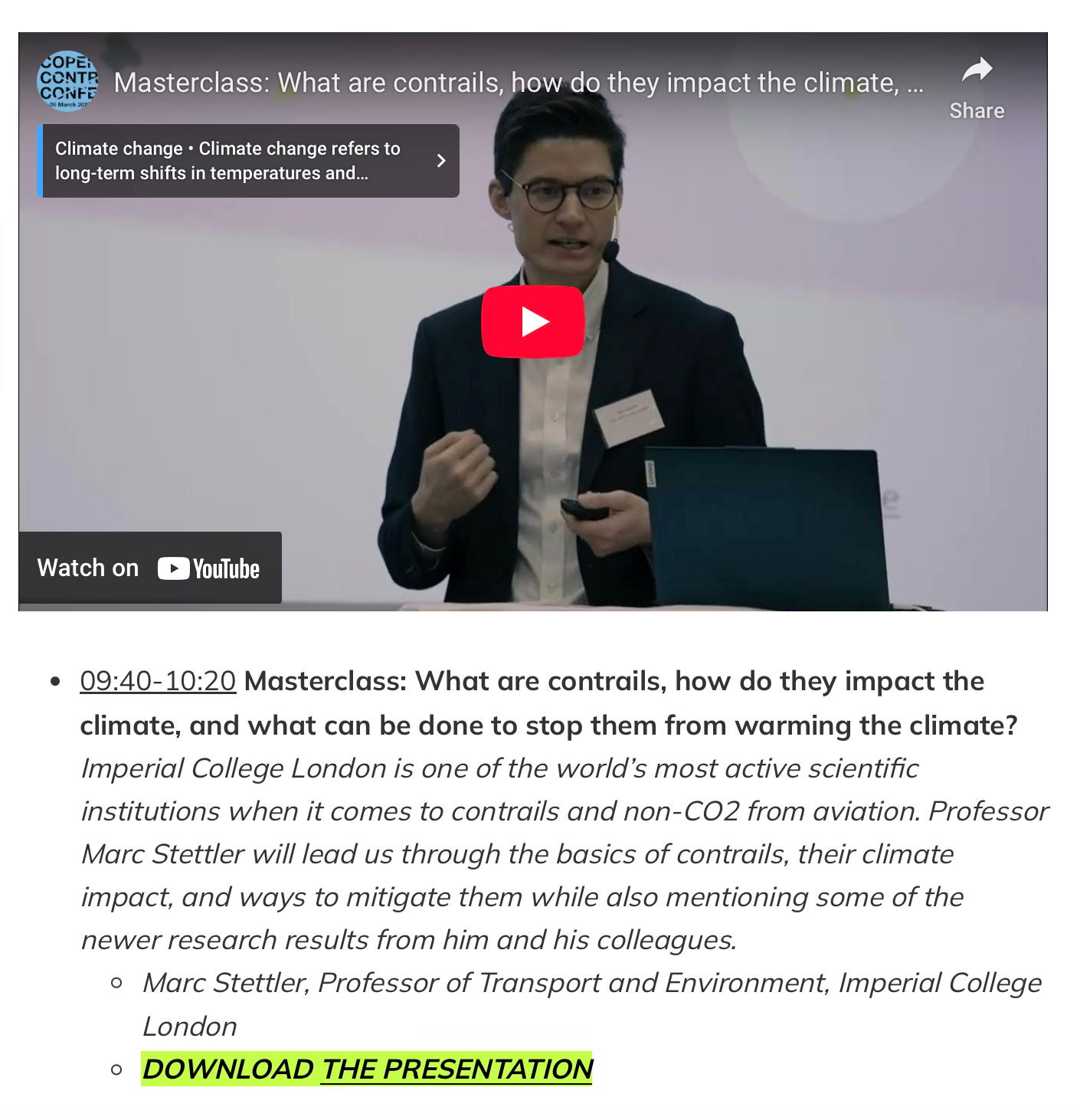👀🤝What Others Saw at the Copenhagen Contrails Conference? ✈️ ☁️
Reflections from LinkedIn + links to videos and presentations from the event
As a co-organizer of the Copenhagen Contrails Conference, I enjoyed seeing this community come together — in panels, side conversations, networking breaks, and working sessions.
Likewise, speakers and participants have been posting their impressions on LinkedIn after the conference, and what stands out is not just how many angles people are working from—science, policy, tech, operations—but how aligned they are on the need to move forward toward action.
Here are a few quotes that stuck with me.
On Urgency, Momentum, and Myth-Busting 🚀

Paul Hodgson of the Aviation Impact Accelerator at the University of Cambridge spoke about AIA’s Operation Blue Skies contrail plan at the conference. He used his LinkedIn post to break down some persistent myths that he believes should no longer hold us back:
"We must not allow myths and excuses to stand in the way of progress. Contrails are a solvable problem — and it is imperative that we do so.
Myth 1: “Aviation can only move slowly.” But Boeing went from concept to Entry-Into-Service on the 747 in just 4 years and 5 months.
Myth 2: “The risk of CO₂ from fuel burn penalties outweighing contrail savings.” Our report shows the fuel penalty is orders of magnitude smaller in warming than the contrail savings.
Myth 3: “Contrails are just too complicated.” We’ve pumped aviation full of the best & brightest for generations. It would be a betrayal of that talent if we don’t act."
On Policy and Political Will 🏛️

Dimitar Nikov, Policy Officer at DG CLIMA within the European Commission, offered a structured summary of his takeaways:
"What I take out of this conference is that the EU political will on addressing aviation non-CO₂ needs to remain strong and stable.
Uncertainties do exist, but they are not a showstopper. Not all contrails are created equal, and a robust, risk-based approach can move us forward.
We don't need to wait for humidity sensors to begin mitigation — though more sensors would improve our dataset.
The EU MRV system is already launching with millions of flights/year. It’s a perfect playground to test contrail avoidance — and build the case for champion airlines and ATC.
Let’s act now, not later."
Nuala Doyle from Opportunity Green also emphasized the policy gap — and the opportunity to close it:
"Right now, the majority of non-CO₂ impacts of aviation go unregulated. Crucially, the aviation industry isn't paying for its non-CO₂ climate impacts — something they are responsible for under the Polluter Pays Principle.
The upcoming revision of the EU ETS is a good place to start. Can we also set a near-term target for reducing the climate impact of contrails?"
On Technology and Trials 📊🔧
Several voices highlighted the real-world progress that’s already happening. Alejandra Martín Frías of Flightkeys wrote:
"It was a wonderful opportunity to reconnect with old friends and forge new connections in the ongoing contrail discussion. I look forward to continuing these important conversations."
Maxime Meijers, CEO of Estuaire, was enthusiastic:
"Contrails are aviation-induced clouds warming the planet at night. They are one of the cheapest ways for aviation to fix its climate impact.
It started with an insightful discussion with Sebnem Erzan from Google on informing passengers about contrails on Google Flights, and updates to the Travel Impact Model.
Time for our message to resonate beyond the aficionados!"
On Regulation and Readiness 🛫

Jan Lueckhof from DHL used his post to call out what’s missing — and what’s needed next:
"We need to mitigate contrails on a system level — not just EU ETS flights.
To do so, we need a real Single European Sky. Air Traffic Management will need to play a decisive role, and we should start equipping them with the necessary funding now.
Also, the Science Based Targets initiative needs to focus more on contrail mitigation so that voluntary action becomes possible right away."
On Community and Collaboration 🤝

Many participants expressed gratitude for the atmosphere and shared purpose in the room.
Vincent de Haes from To70 excellently led the panel discussion on uncertainty. He described the event as:
"The mother of all bubbles… Two days of focus on contrail awareness, understanding, and action."
Yes, it was a two-day bubble, and everyone inside it caught what was quickly dubbed the “Contrail Virus.” The next step will be to spread this virus in broader circles and get more scientists, airlines, climate organizations, and politicians involved.

Get the presentations and watch the videos.
We had a professional video crew filming and editing all the sessions on the first day of the conference. You can find the videos on the Copenhagen Contrails Conference YouTube channel.
The presentations (and the videos) can also be found on the conference website under the submenus, Agenda Day 1 and Agenda Day 2.
We only share the presentations and video recordings we received the speaker’s permission to share.
Blue Lines reach 1100 subscribers.
Thank you for your continuous support.
Last month, we reached 1,000 subscribers and received this fine illustration from Substack.
This month, we passed 1,100 subscribers.
It’s the plan to keep the Blue Lines newsletters free, so please share them with aviation or climate-interested folks in your network. We are pleased that so many people are reading these newsletters. Thanks again!
Go to Blue Lines’ educational website to explore contrails in depth.
(As regular readers of the Blue Lines newsletter know, contrails are the thin white streaks that airplanes sometimes leave behind in the sky, created from water vapor and engine soot. Some of these condensation trails can spread out and form high-altitude ice clouds (cirrus), which reflect some of the sun’s energy back into space while also trapping outgoing energy in the atmosphere, leading to a net warming of our planet equivalent to 1-2% of human-induced global warming. However, studies and trials indicate that it is relatively simple to avoid most warming contrails by flying around areas in the atmosphere that are prone to contrails. This climate solution—often referred to as contrail management or contrail avoidance—is what Blue Lines advocates for and hopes to see implemented globally.)
See you soon.
Joachim Majholm,
Blue Lines







